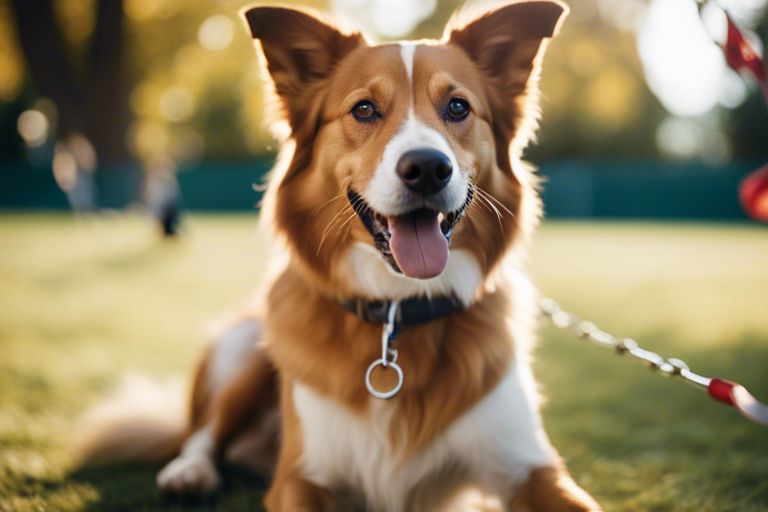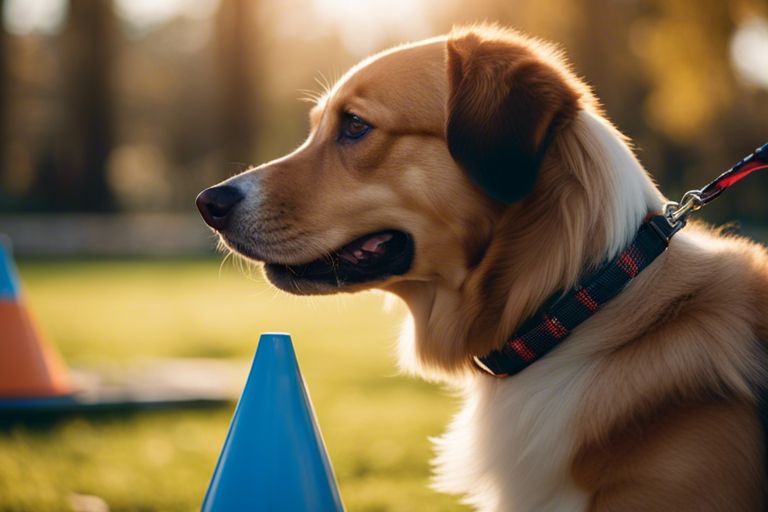Obedience in dogs is a key aspect of building a strong bond with your furry friend and ensuring a harmonious relationship. From consistent training routines to positive reinforcement techniques, mastering the art of obedience training can lead to a well-behaved and well-adjusted canine companion. In this listicle, we look into 10 timeless tips that will set you and your dog up for success in the world of obedience training.
Key Takeaways:
- Consistency is key: Dogs thrive on routines, so it’s important to be consistent with your training methods and rules.
- Positive reinforcement works best: Rewarding good behavior with treats, praise, or playtime is more effective than punishing bad behavior.
- Patience is a virtue: Training can take time, so be patient and understanding with your dog as they learn new commands and behaviors.
Establish Leadership
Consistent Command Use
If you want to establish yourself as the leader in your dog’s eyes, consistency is key. This means using the same commands and cues every time you give directions to your furry friend. Dogs thrive on routine and repetition, so make sure to be clear and concise with your commands to avoid confusion.
Reward Good Behavior
If you want to see lasting obedience in your dog, it’s crucial to reward good behavior consistently. Positive reinforcement is a powerful tool in training and can help reinforce the behavior you want to see more of. Whether it’s a tasty treat, praise, or playtime, find what motivates your dog and use it as a reward for following commands.
It’s important to note that rewarding good behavior doesn’t always have to be a tangible treat. Sometimes, a simple pat on the head or a belly rub can be just as effective in reinforcing positive behavior. Recall, the key is to make the reward something that your dog values and enjoys.

Practice Patience
Training a dog requires a tremendous amount of patience. Dogs, like humans, have their own learning pace, and it’s crucial to understand that progress may not happen overnight. Consistency, positive reinforcement, and a calm demeanor are necessary components of successful obedience training.
Keep Sessions Short
Any training session should be kept short and sweet. Dogs have limited attention spans, so it’s best to keep sessions to 10-15 minutes. By keeping sessions brief, you can maintain your dog’s focus and prevent them from becoming bored or frustrated.
Remain Calm Always
An necessary aspect of obedience training is for the trainer to remain calm at all times. Dogs can pick up on our emotions, so it’s crucial to stay composed and patient, even if your dog is not getting a command right away. Yelling or showing frustration will only confuse and stress your dog, making it harder for them to learn.
Sessions should be conducted in a quiet, distraction-free environment to help your dog concentrate better. Showing consistent and calm leadership will establish trust between you and your dog, making the training process smoother and more effective in the long run.
Use Positive Reinforcement
Treats for Success
While training your dog, using treats as positive reinforcement can be highly effective. Treats are a great motivator for dogs and can help them associate good behavior with rewards. Make sure to use small, easily consumable treats to keep your dog engaged and focused during training sessions.
Praise Affectionately
For successful obedience training, remember to praise your dog affectionately when they display the desired behavior. Dogs thrive on positive reinforcement and respond well to verbal praise, gentle petting, and enthusiastic encouragement. This positive feedback strengthens the bond between you and your dog, making them more likely to repeat the desired behavior.
Success with praise during obedience training comes from being consistent and sincere in your interactions with your dog. Make sure to praise them immediately after they exhibit good behavior, so they understand what they are being rewarded for. Your tone of voice and body language should convey genuine happiness and approval, reinforcing the message that they are on the right track.
Maintain Consistency
Same Commands Always
Now, an crucial aspect of obedience training success with dogs is maintaining consistency in the commands you use. It’s crucial to ensure that all family members or anyone involved in training uses the same set of commands for each obedience cue. This consistency helps prevent confusion for your dog and allows for more effective learning.
Regular Training Schedule
To establish a well-behaved dog, an crucial factor is a regular training schedule. By incorporating daily short training sessions into your routine, you’ll reinforce obedience behaviors and strengthen your bond with your furry friend. Consistency in training times and duration is key to helping your dog grasp commands effectively.
A regular training schedule not only instills discipline in your dog but also helps maintain their mental stimulation and physical well-being. This structured approach supports long-term obedience training success and reinforces positive behaviors consistently. Remember to make training sessions fun and rewarding to keep your dog engaged and motivated.
Socialize Your Dog
Introduce New People
Keep in mind that socializing your dog is crucial for their well-being. Introducing your dog to new people should be a gradual process. You’ll want to start with calm, friendly individuals who will respect your dog’s space and help them feel comfortable. Encourage positive interactions by having new people offer treats and praise to build trust with your dog.
Experience Different Animals
You’ll find that exposing your dog to a variety of animals can help them become more well-rounded and well-behaved. For example, taking your dog to a dog park where they can interact with other dogs can improve their social skills. Additionally, introducing your dog to cats, rabbits, or other pets can teach them how to appropriately interact with different species.
A well-socialized dog is more likely to exhibit good behavior in various situations and environments. It’s important to expose your dog to different animals early on to help them develop positive associations and prevent fear or aggression towards other pets.
Set Clear Boundaries
Once again, setting clear boundaries is important in obedience training for dogs. It helps them understand what is expected of them and what behavior is not acceptable.
Define Off-Limit Areas
Boundaries: Define specific areas in your home that are off-limits to your dog, such as bedrooms or the dining room. Use baby gates or closed doors to physically block access to these areas.
Enforce House Rules
Assuming: Assuming your dog understands the house rules without consistent enforcement is a common mistake. Make sure to enforce the rules consistently to help your dog learn what is acceptable behavior.
Enforce: Use positive reinforcement to reward good behavior and redirect or correct undesirable behavior. Consistency is key in enforcing house rules to establish a routine for your dog to follow.
Train Daily
Integrate Training Activities
All successful obedience training programs have one thing in common – they are consistent. Integrating short training activities into your daily routine is key to reinforcing good behavior in your dog. Whether it’s practicing basic commands like sit, stay, or heel during your morning walk or incorporating training sessions into playtime, consistency is key.
Consistent Daily Practice
Daily practice is crucial for obedience training success. Dedicate time each day to work on commands and reinforce good behavior. Keep training sessions short and positive to keep your dog engaged and interested. Consistency is key in building a strong foundation of obedience in your dog.
Regular training sessions not only help reinforce good behavior but also deepen the bond between you and your dog. By making training a part of your daily routine, you are setting your dog up for success and creating a well-behaved companion for life.
Address Issues Early
Correct Bad Habits
If you start noticing any undesirable behaviors in your dog, address them immediately. Dogs thrive on consistency, so be firm and consistent in correcting bad habits. Whether it’s jumping on guests, excessive barking, or chewing on furniture, provide clear commands and redirects to teach your dog the appropriate behavior.
Prevent Behavior Problems
Issues that are left unaddressed can escalate and become ingrained behavior problems. It’s vital to establish boundaries and rules from the beginning to prevent behavior issues. Set clear expectations for your dog and enforce them consistently so your furry friend understands what is expected of them.
The key to preventing behavior problems is early intervention and consistent training. Keep in mind, dogs thrive on structure and routine, so establishing good habits from the start is crucial for long-term obedience training success.
Be Adaptive
Tailor Training Techniques
For successful obedience training with your dog, you must be adaptive in your approach. Each dog is unique, and what works for one may not work for another. Tailoring your training techniques to suit your dog’s individual personality and learning style is crucial for success.
Observe Dog Responses
Adaptive training also involves closely observing your dog’s responses during training sessions. Pay attention to their body language, facial expressions, and overall demeanor. This will allow you to assess if your training techniques are effective or if adjustments need to be made.
Techniques:
By observing your dog’s responses, you can determine if they are engaged, frustrated, or bored during training. This information will help you make necessary changes to keep your dog motivated and on track towards obedience success. Always be prepared to adapt your training approach to best suit your furry companion’s needs.
Conclusion
Hence, following these 10 evergreen tips for obedience training success with dogs will set both you and your furry friend up for a fulfilling and harmonious relationship. Consistency, positive reinforcement, patience, and understanding are key components to successfully training your dog. By incorporating these tips into your training routine, you will not only strengthen the bond with your pet but also create a well-behaved and happy companion for life.
FAQ
Q: Why is obedience training important for dogs?
A: Obedience training is crucial for dogs as it helps establish boundaries, enhances communication between the owner and the pet, improves safety, and promotes good behavior.
Q: How can I make obedience training sessions successful?
A: To ensure successful obedience training sessions, it is important to be consistent, patient, use positive reinforcement techniques, keep training sessions short and frequent, and always end on a positive note.
Q: What are some common mistakes to avoid during obedience training?
A: Some common mistakes to avoid during obedience training include using punishment-based techniques, being inconsistent with commands, not being patient, expecting too much too soon, and not taking the time to understand your dog’s behavior and needs.

